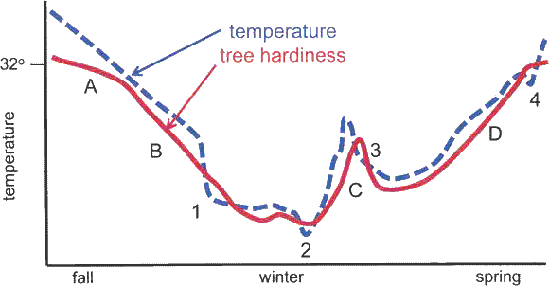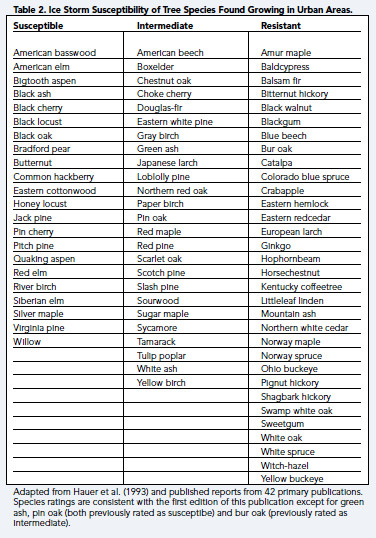3–5 minute read
Limiting climate factors are those that are difficult or impossible to overcome despite good cultural practices and siting. They are important to consider when selecting plants for your landscape. The major climate challenges to plants in our area are:
Temperature swings
During fall, winter, and spring, temperature swings can wreak havoc on plant dormancy.
- To encourage dormancy, don’t fertilize plants after August, gradually reduce watering in fall, and leave some flowers on plants like roses that develop fruits because fruiting signals to the plant to prepare for winter.
- To maintain dormancy, use mulch to insulate soil once it has frozen, and site early spring bloomers like some camellias and magnolias in winter shade (e.g. the north side of your home).
The schematic below illustrates how temperature patterns can cause injury even to plants rated as hardy in our area.
 Colorado Master Gardeners CMG GardenNotes 143
Colorado Master Gardeners CMG GardenNotes 143
Key
Stages of hardiness
- increased cold hardiness induced by shorter day length
- increased cold hardiness induced by lowering temperatures
- dehardening due to abnormally warm temperatures
- normal dehardening
Damage points
- rapid drop in temperatures with inadequate fall hardening
- temperatures lower than plant maximum hardiness
- rise and fall of midwinter temperatures
- spring frosts
Hot, humid summers
Heat tolerance is just as important as cold-hardiness but, because it is not well-understood, it tends to be overlooked. In particular, hot nights prevent many cold-hardy plants from thriving here.
- Spruce, white pine, and lilac often develop diseases in our area because of the stress caused by long, hot summers. Perennials adapted to cooler climates (tulips, delphiniums) are often not persistent here.
- A heat zone map has been created by the American Horticulture Society, but it needs refining before growers add the information to plant labels. In particular, the heat zone map references only the daily maximum temperature and ignores night temperature.
- Urbanization, particulate pollution, and global warming all cause selectively greater increases in night temperatures. Urbanization is caused by the radiant heat emitted by paved surfaces. This is obvious on heat maps and is seen in Chapel Hill, despite its small population. Global warming and pollution both increase nightime cloudiness, which traps heat.
- Cool-weather plants also may have increased susceptibility to diseases from our humidity and root rot problems from poorly drained soils.
Frequent severe ice storms
Purchasing resistant plants is the best strategy.
 IL Extension Trees and ice storms…
IL Extension Trees and ice storms…
Improper removal of ice and snow can cause as much damage as the combination of ice, snow, and wind. Frozen, laden limbs are very brittle and snap easily if bent the wrong way. Remove snow by gently sweeping branches upward to lift off snow without further stressing the limbs. Do not attempt to remove ice. Young drooping branches will often recover after thawing.
Pruning tends to decrease hardiness temporarily, so delay removing damaged limbs until late in the winter unless the damage is catastrophic. Plants often come back from the roots even if much of the top growth is destroyed.
- Trees and Ice Storms…
- Ice Storms Orange County ice storm likelihood
- Trees
- Winter climatology of North Carolina
